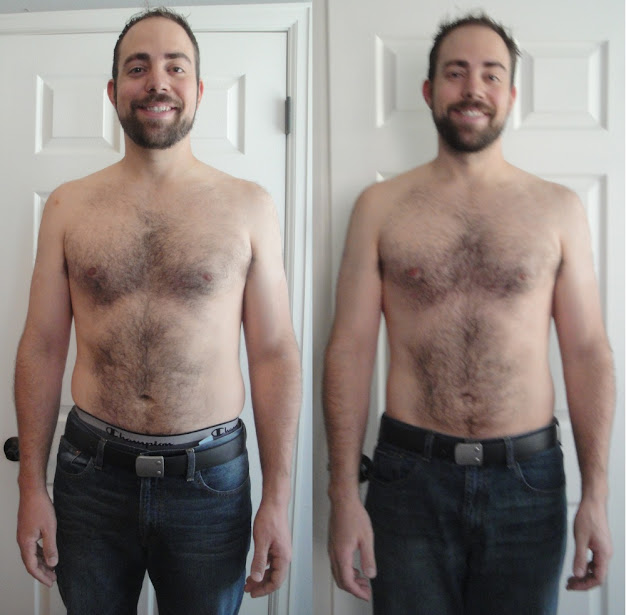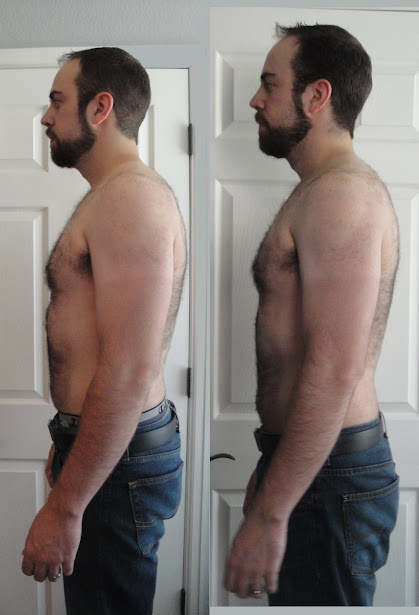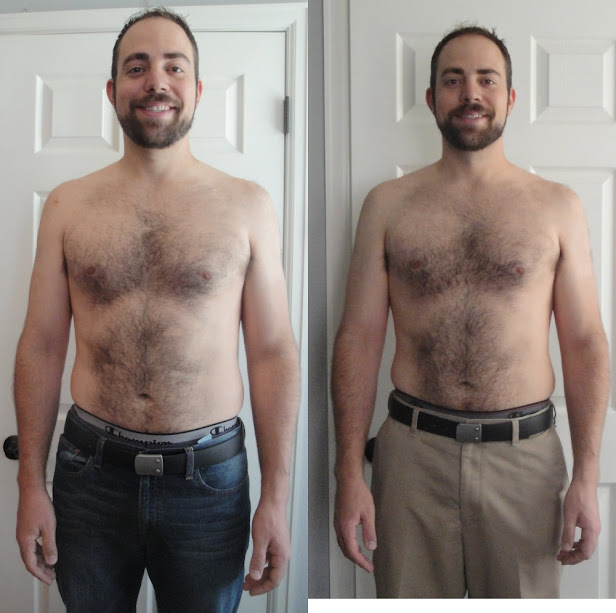Greetings! We had a big weekend, and I finally uploaded my pics of mayo. So here’s all of it, briefly. As briefly as I can do anything, that is.
Before I get to that, I wanted to tell you guys that I’ve been reading my review copy of Practical Paleo, and it’s amazing. I’m not nearly as far into it as I’d like to be (busy weekend, as I mentioned) but it’s already a fantastic resource for anyone interested in paleo. Great information, organized beautifully, with enough depth to answer most any question you could have. I’m really, really impressed. I even made a recipe from one of the earliest reviews of the book that I saw, and it turned out very well. It was a little spicy for me, I think because I misread the recipe (the recipe makes it look like you want to put all of the spices listed into the burger mix, but you actually want to mix all of those ingredients together separately, and then add 2 Tbsp of that mix into the meat) so I ended up adding more of the spices than I should have. I doubled the meat but didn’t double the spices, thankfully, so it wasn’t as bad as it might have been. Next time, though, I’ll definitely be cutting the spices down to the amount actually listed in the recipe. The pineapple topping was excellent, and that’s going to be a regular as well. I didn’t use the ginger or the sesame seeds, because I didn’t have any on hand. So really, it ended up pineapple chunks with juice and a little water, crushed up, with a couple tablespoons of Tamari in it. Not at all what the recipe called for, but I’m a free spirit. And it was still good.
I also had some cherry sorbet last night, and it has convinced me that I absolutely need to make my own. Maybe a lemon cherry? or pineapple cherry? Anyway, I’m going to do it and it’s going to be awesome. I’ll figure it out and share the recipe.
As for me, I’m still doing my Convict Conditioning, and still enjoying it a great deal. Some of the exercises I’m doing now are actually pretty challenging, and others are still easy, which is to be expected. I’m just slowly working my way through all of it, making steady progress. I’m still easily staying under 210 lbs and 15% body fat,which is a good thing. I’ve convinced myself officially to do a Whole 30 now, and I’ve even got some friends who will do it with me. I’m thinking September.
Okay, here’s the mayo recipe: Paleo Mayo
Here’s how I did it.

These are your ingredients. The “Extra Light Tasting” olive oil is key. You don’t want to use extra virgin, as the stronger flavor will overpower your mayonnaise flavor. Maybe if you wanted to make some kind of garlicky, olivey base mayo to use in a caesar dressing it would work? I’ll have to try it sometime, I guess. if you were better prepared than I am, you might also have fresh squeezed lemon juice available. Also, most mayo recipes just call for plain yellow mustard, but I kinda like using some stoneground stuff. Your mileage may vary.

Okay, this is the mustard, vinegar, lemon juice and egg yolks. i was supposed to use whole eggs, but wasn’t paying attention to my recipe. D’oh! its cool, it still turned out just fine.

Okay, blend it/process it/whisk it, whatever. Get it mixed. Put your lid on and get ready to drizzle.

This little hole right here is why my food processor is my mayo-making machine of choice. I can just pour the olive oil into this cup and it will very slowly drizzle into the processing chamber. It makes it impossible to rush, and makes the whole thing very painless. So there you go, really. you just drizzle your oil into the mixer while you’re mixing, and it should form an emulsion. As the emulsion comes together, you’ll see it start to look like mayonnaise and get all creamy. Once it does this, you can keep adding oil slowly and the oil will continue to get incorporated into the mayonnaise, but if you do too much of it you can end up with an oily mouth feel. Not ideal. So use the cup of oil as your guideline, but you’ll really just need to make mayo a couple of times to get a feel for how it looks when you’re done.

Okay, there it is. Homemade paleo mayo. Ta-da! It’s good stuff, and this ended up being a very small batch, compared to previous batches. Maybe the yolk-only makes it form an emulsion faster, requiring less oil and making for less volume? Now that I’ve got a better feel for mayo (and a new recipe to try in Practical Paleo) I’m thinking I may have to try bacon mayo again. We eat a lot of bacon and always save our drippings, which basically makes our mayo free. A couple eggs are like less than $1, regardless of where we buy them, and a tablespoon of a few things I’ve got plenty big containers of aren’t worth calculating the price on. With fat from bacon we’re going to eat anyway forming the bulk of the mayonnaise, how can I say no? I’ll do that and maybe run it in video format for you guys so you can see how it goes.
Can a Christian be a Paleo Diet Advocate? – An interesting post, and one that I’d imagine comes up for people when talking to friends and family, or when trying to decide for themselves whether this is the lifestyle for them. I think it’s clear that a Christian can be a proponent of this way of eating, even if they reject the notion of evolution. Evolution provides the “why” of the paleo diet (Why don’t we deal well with grains, generally speaking? Why do we deal well with meat? Why does our digestive system look different from that of our closest living relatives?) but you don’t need the why for it to work for you. That’s the best part of science, I think. You don’t need to believe it, agree with it, or even be aware of it for it to work, consistently and predictably. So if you think the Earth was called into being 6000 years ago, or if you think it was spun into being from the matter thrown out of a supernova 6 billion years ago, eating this way will still help to keep you lean, healthy and happy. And that’s something we can all agree is a good thing.
At what temperature are food enzymes destroyed? – I figured I’d post this one to see what people think about it. Generally when you hear people arguing about food enzymes, they’re about three quarters of the way to advocating for a raw vegan diet. Obviously, this isn’t the case for Sarah. So what gives? We know that cooking makes food more digestible, can give us greater access to certain nutrients, makes food easier to chew, etc. Cooking is generally good, right? How concerned ought we to be about “food enzymes” anyway? There are even arguments about whether whole foods even contain the enzymes that people are worried about destroying (many sources claim that there isn’t any lactase in raw milk, while raw milk advocates claim there is). So who knows? But apparently if there are enzymes in your food and you don’t want to kill them, your finger can tell you when the liquid is too hot. So there you go.
Another way to pit cherries – Definitely a good way to go, especially if you’re going to use the cherries for something where they don’t need to look all pretty. Alton Brown would be proud of this multi-tasking!
I’m 95% Confident This is a Good Definition of a P-Value – If you read a lot of scientific studies, but aren’t too keen on the statistics side of things, this is a really helpful piece detailing what those p-values mean, and how useful they are.
How to Spot an A-Hole – It’s the internet. They’re everywhere.
Ancient Wisdom Confirmed by Modern Science – I remember reading Tom Naughton’s interview of this guy a while back and thinking that his book sounded pretty darned cool. I never ended up buying it, because I had (and still have) a giant stack of books on my nightstand that were already being neglected. Still, it’s cool to see that Johnathan Bailor is tying in to the ancestral health movement. The more the merrier!
Grains, Vegetarians, Vegans and Nutritional Density – This is a cool piece, and one I’ve done something similar to before, though not as throughly. I like the idea of it, but i think it can get too far into nutritionism. Because the calories reported on a bomb calorimeter and the amount of protein/minerals/vitamins reported in a lab for a given food have only a passing relationship with what your body actually gets out of that food. We’re all individuals, and our food is individual. Our digestion, where and when our food was grown, how far it traveled after harvest or slaughter, how it was raised, even what time of day we eat or how much sleep we got the night before all seem to influence our ability to absorb nutrients. So I get what he’s saying, and I think it’s a fair point. I think it’s also probably very convincing to people who really do think of whole foods as “a good source of vitamin C” or “100% of your RDA for selenium” but once you get to a more nuanced understanding of nutrition and digestion, it doesn’t actually pay to spend too much time fiddling with the numbers like this. I’m sure Mr. Nikoley is well aware of this, and wrote this post to make a point, not to advocate for a nutritionist approach.
Paleo Parenting: Our Free Guide – Woot! Free things about feeding kids real food!
Drug Companies & Doctors: A Story of Corruption – I’ve posted things similar to this before, but this article (and I’m sure the book it’s referencing) have a more in-depth take of the issue than I’ve seen previously. Some specific facts & figures as well as some quotes from prominent doctors, pharmaceutical executives, journal editors, etc. It’s scary stuff. This is the sort of thing that makes you not want to listen to any mainstream science, or at least not trust it without verifying who paid for it and how it was designed first. That’s the most frustrating thing. Pure science is an incredible tool for understanding ourselves and our world. Thinking that the system of funding and publishing we have now is a failure doesn’t mean you hate science, it means you hate what a bunch of assholes have done to science.
Artichoke Dip – If you use some homemade mayo, fresh garlic and some good quality parmesan (maybe even fresh artichokes?) you could make this into a high-quality primal dip for veggies. Or a topping for burgers/steaks/chicken? Sounds crazy tasty to me.
Chareva’s Kitchen: Pancake Sandwiches – I love this idea. We’ve struggled trying to find gluten-free bread with the right texture and flavor, but Pamela’s pancake mix is pure gold every time. If you want a gluten free, semi-paleo PBJ, you could do worse than a Pamela’s pancake with Justin’s Honey Almond Butter and some Crofter’s all-fruit jam.
Easy and Delicious Sausage Frittata – This just sounds tasty. I love frittatas, mostly because I never mastered the technique of an actual omelet.
I have many more links, but this is already a hefty load for one day. I’m going to try to post every day until I get through all the stuff I want to share with you guys. Thanks for reading, and I’ll talk to you tomorrow!







